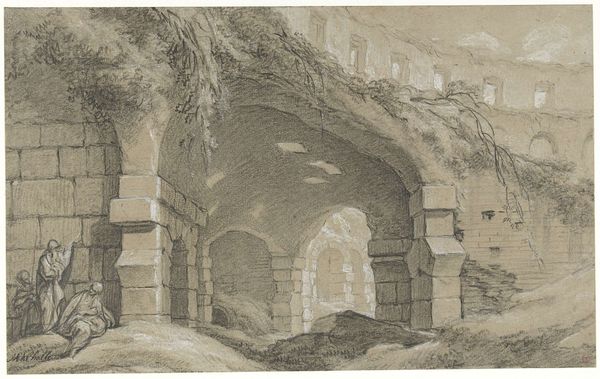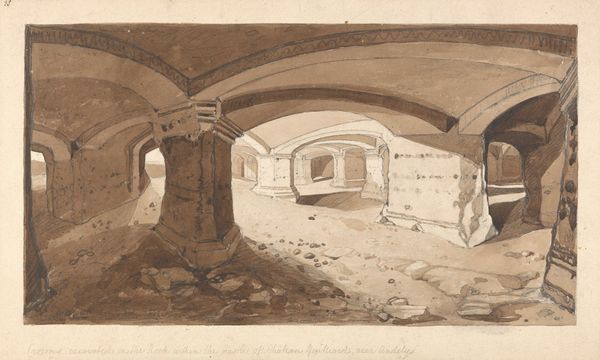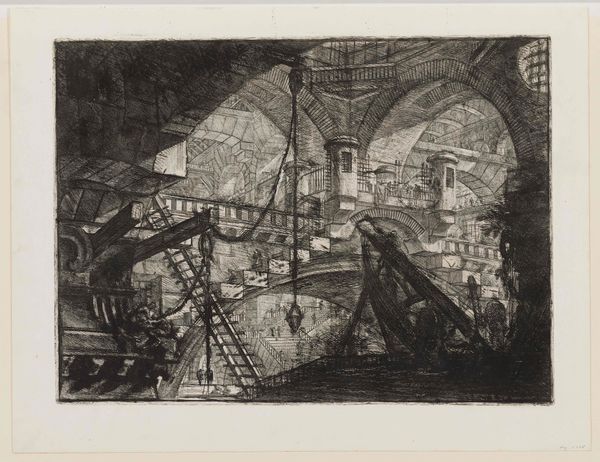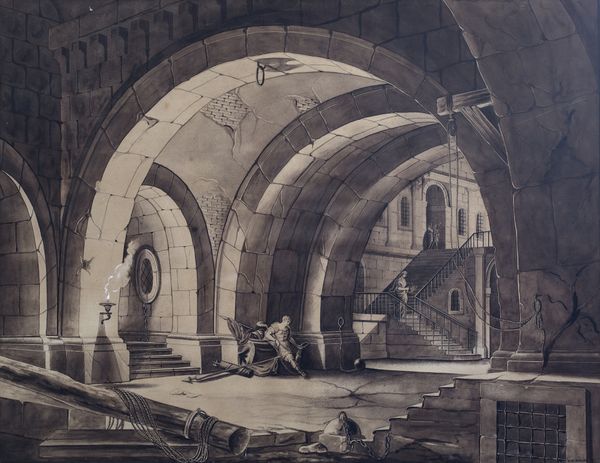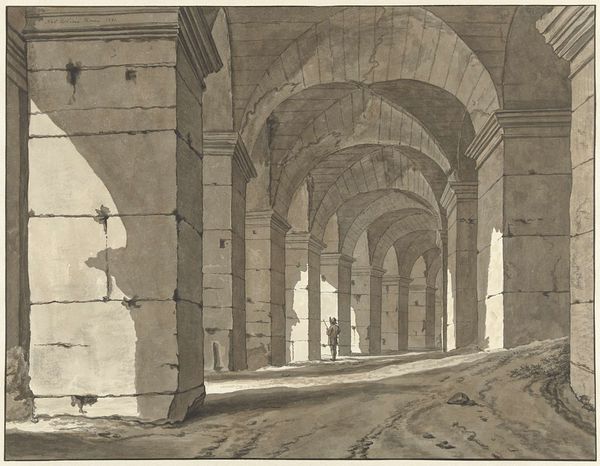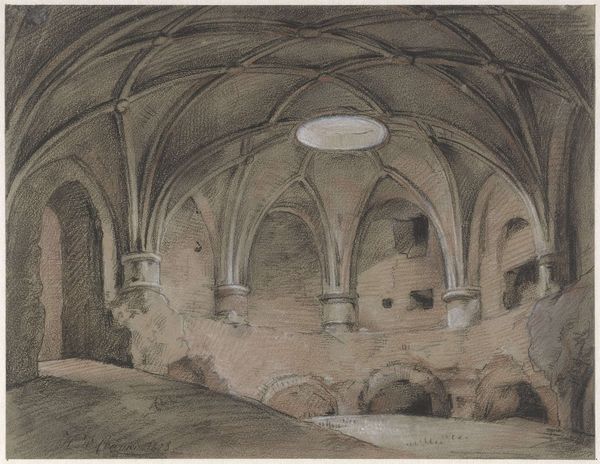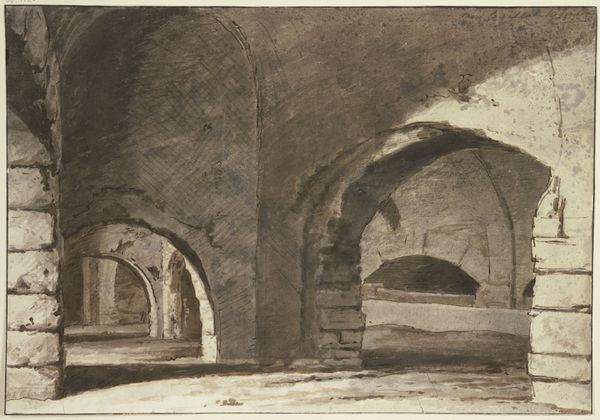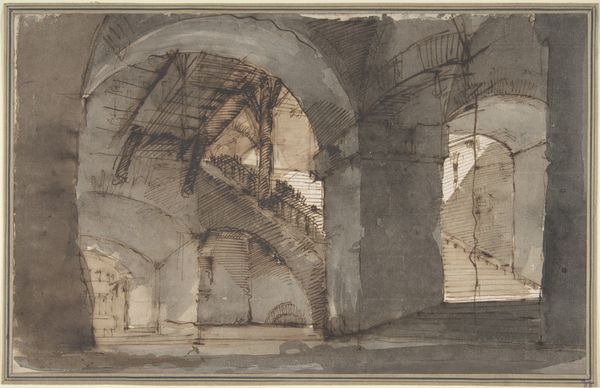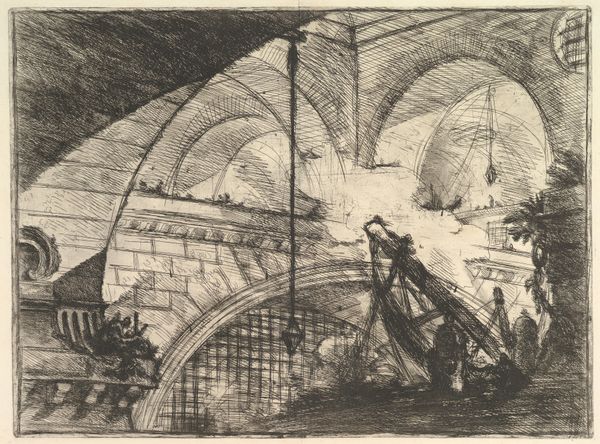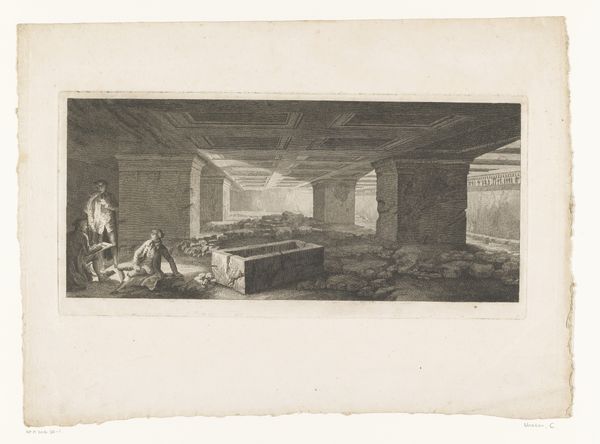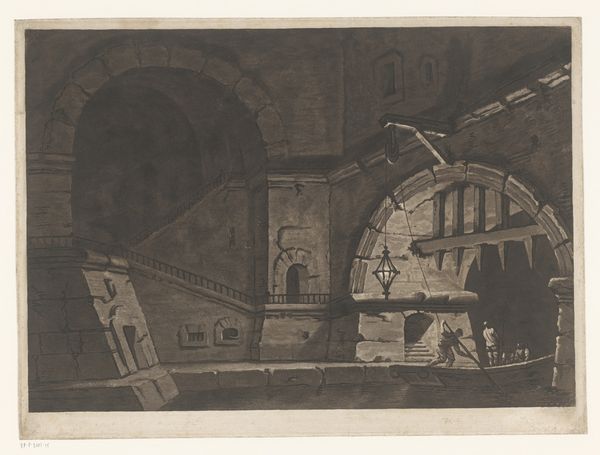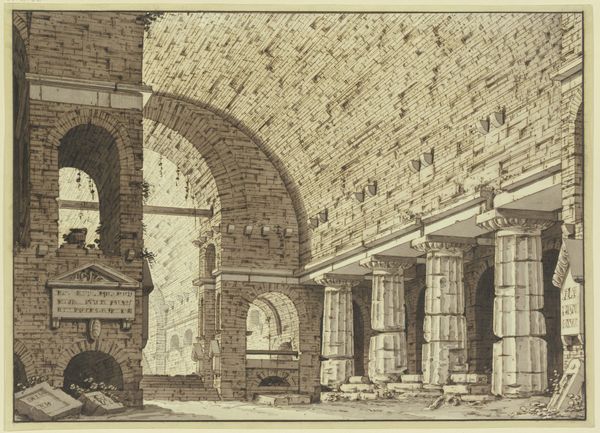
Dimensions: support: 250 x 329 mm
Copyright: CC-BY-NC-ND 4.0 DEED, Photo: Tate
Editor: So, this is Thomas Johnson's "View of Trinity Chapel Triforium, Canterbury Cathedral." It's undated, but Johnson lived in the 17th century. It's a drawing, and it feels very...unvarnished, almost like a behind-the-scenes look. How do you read this work? Curator: Johnson's drawing offers a glimpse into the cathedral's infrastructure, revealing the 'bones' that support religious spectacle. Consider how the depiction of this liminal space contrasts with the grand narratives usually presented to the public within the cathedral. What does it mean to show this usually unseen space? Editor: I guess it shows the labor and architecture that supports the Church's power. It's not just divine, it's built. Curator: Precisely. By focusing on the triforium, Johnson subtly critiques the idealized image of the Church, grounding it in earthly construction and perhaps even the less-than-holy aspects of institutional power. Editor: It's like revealing the stagehands behind the performance. I hadn’t thought about it that way. Curator: These spaces are rarely seen by the public, making Johnson's choice of subject a deliberate act of revealing the underpinnings of religious authority. Editor: Thanks, that gives me a whole new perspective on the piece!
